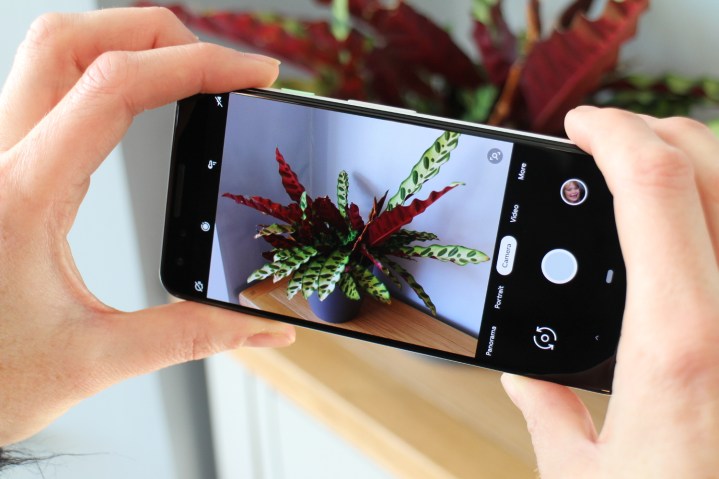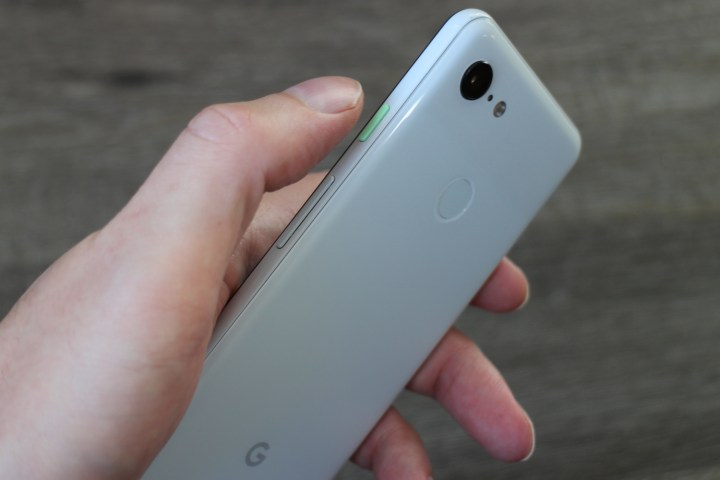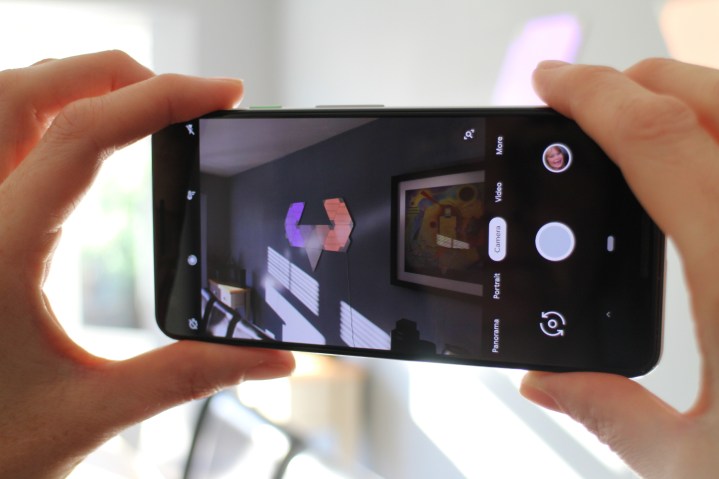
If there’s one area where smartphones have really improved over the last couple of years, it’s photography. Google’s Pixel 2 was our reigning champion in the best camera phone category, so it’s not surprising that the device that knocked it out of the top spot was its successor, the Pixel 3.
Anyone lucky enough to have a Pixel 3 or Pixel 3 XL has access to the pinnacle of Google’s camera know-how, and can look forward to wonderful photos that will capture precious memories for posterity. But it never hurts to know more, which is why we’ve crafted this hands-on guide to help you get the best from the
Camera specs
If you’re concerned that the bigger, more expensive
The main camera features a single lens rated at 12.2 megapixels. It has an f/1.8 aperture and support for phase detection and laser autofocus. There’s also support for HDR and optical image stabilization (OIS). It can record video at up to 4K resolution at 30 frames per second (fps).
Around front, you’ll find a dual-lens camera, with both lenses rated at 8 megapixels. One has an f/1.8 aperture and the other is an ultrawide, 97-degree lens with an f/2.2 aperture. The front-facing camera can record video at up to 1,080p at 30 fps.
These specs are underwhelming on paper, but Google’s secret sauce is its image-processing capabilities, partly powered by a special chip that sits alongside the main processor called the Pixel Visual Core.
Getting started

The camera icon can be found at the bottom right of your home screen by default, but there is a way to access it quickly, even if the Pixel 3’s screen is off. You can launch the
If this shortcut doesn’t work for you, then go to Settings > System > Gestures and tap on Jump to camera, then toggle it on.
You can also use a gesture to quickly switch between the front-facing camera and the main camera, though you need to be in the camera app for this to work. A quick double-twist of your wrist when the camera is open should switch between front and back.
If this shortcut doesn’t work for you, then go to Settings > System > Gestures and tap on Flip camera, then toggle it on.
The camera app

The
At the top or left of the viewfinder window, there’s the timer, motion, the white balance, and the flash.
The timer is good for snapping shots, particularly group selfies automatically, as it gives you a few seconds to get the perfect angle. Motion captures several frames before and after you snap a shot, like a short video. It’s set to Auto by default, but you may want to turn it on all the time. We’ll look at why in the Top Shot section below.
Because photos are often tinted by the lighting conditions they’re taken in, Google’s artificial intelligence (A.I.) sets the white balance automatically to get the colors right. We recommend leaving this setting on auto. We generally turn the flash off as it doesn’t tend to get great results. The
What is HDR+?
High dynamic range brings the ability to capture bright highlights without blowing them out, but also pick up on details in the shadows. While in the past,
If you prefer to exert manual control over this, you can open the camera app and select More > Settings > Advanced and toggle on
Select the best shot with Top Shot
If you have Motion turned on, then you are capturing a few frames before and after you touch that shutter button, and the Top Shot feature enables you to pick the best one after the fact. Open the photo in question, tap the three vertical dots at the top right, then tap Select shots. You’ll see a timeline with all the available frames that were captured, and you can slide through them.
The original shot will often be the best quality, but it’s great to be able to choose another frame if you just missed the action or someone had their eyes closed. Look for white dots above the timeline to find recommended frames. Tap Save copy at the top right if you find one you like.
It’s tempting to leave this on all the time but bear in mind that Motion photos will take up more space than regular photos.
How to use Motion Autofocus

Not to be confused with the Motion shots we were just talking about, Motion Autofocus enables you to tap on a subject and the camera will track it and keep it in focus, which is ideal for pets and children who don’t always sit still. You can tap on your subject in the viewfinder window to set the focus on them and you should see a small circle that stays with them even as you or the subject moves around. If you want to stop focusing on the subject, simply tap the small circle in the viewfinder. This is invaluable for shooting video and tracking a moving subject.
How to use Portrait Mode
The
Google’s A.I. is incredibly adept at applying the blur to the correct areas, but it doesn’t always get it right. Sometimes it struggles with hairlines or complex mixed areas where depth and distance are tough to discern — a common Pixel 3 problem. It’s miles ahead of most of the competition, however.
Each portrait photo you take includes the portrait shot with the blur applied to the background and the original shot. You can tap the thumbnails at the bottom of the photo to switch between them.
You can also adjust the depth, tweak the level of blur, and even change the focal point of the image after taking the photo. To do this, you need to tap the Edit icon at the bottom, second from the left, and then tap that same icon again to find a Depth slider. To adjust overall depth, you can slide it left and right, but you can also tap on the arrow at the right to open separate sliders for Blur and Foreground blur. To change your focal point, simply tap on the photo where you want it to focus.
How to take wider selfies
It can be frustrating trying to fit in a big group of people when you’re taking a selfie, and there are also times when you want to get more background into a solo selfie. Google has a simple solution. When you have the front-facing camera open, you’ll see a simple slider at the bottom. Slide to increase or decrease the width of your view. You have three widths to choose from.
Get great low-light shots with Night Sight
It can be tough to capture good photos in dark environments, and the flash tends to wash out your subject, lose the background, and create glare or reflections, among other things. Google’s solution is called Night Sight. It extends the same approach that
You can find Night Sight in the More section of the camera app, but you should also get a pop-up message that suggests when it’s appropriate. It’s important to try and stay very still when taking a Night Sight shot because it’s capturing multiple photographs. It works with the front-facing and the main camera and the results are impressive. It works best in specific conditions, so you’ll want to avoid using it to capture a moving subject.
How to use Super Res Zoom

You can zoom in on subjects with your
It’s also possible to zoom in by touching the screen with two fingers and sliding them apart. Slide them together again to zoom out. Alternatively, you can double-tap the screen to zoom in and out.
There is one other way to control the zoom. If you select More > Settings in the camera app, then tap Gestures, you’ll find the option to set the Volume key as a zoom control.
How to save RAW images
If you’re a professional photographer, or you just want more control over editing your images, then you can ensure that the
Now you’re ready to go out and capture stunning photographs with your Pixel 3 or Pixel 3 XL.
Editors' Recommendations
- The best iPhone camera accessories for 2022
- How to transfer photos from an iPhone to a computer
- Key researcher behind the Pixel’s camera left Google in March
- Sony vs. Nikon: How to choose between two great camera brands
- Zoom, prime, wide, or telephoto? Here’s how to pick your next camera lens








